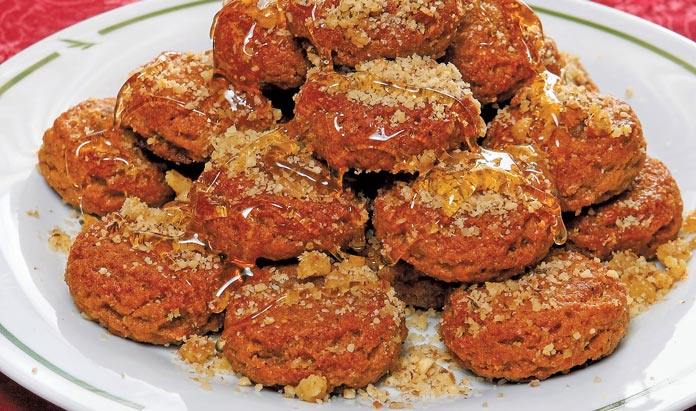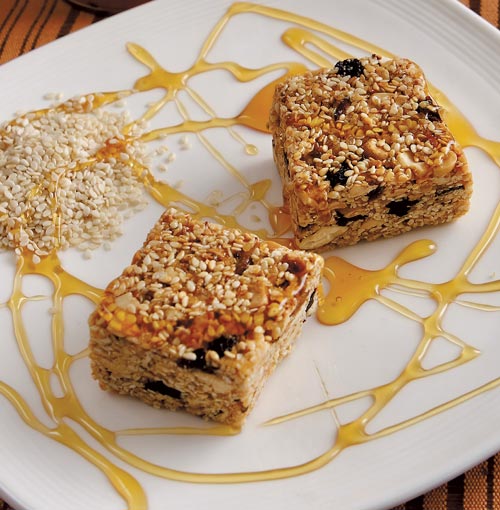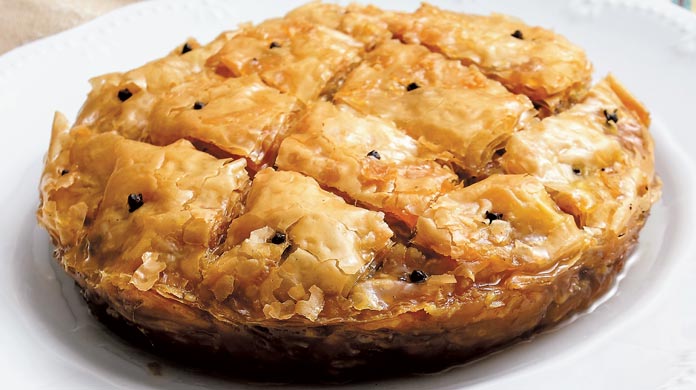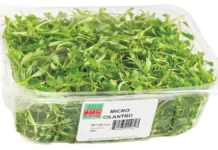
It’s hard to believe, but we are fast approaching the end of 2021! December, the last month of the year, conjures up nostalgic memories of the holiday season, full of friends, family, and fun! But perhaps the strongest recollections we experience are inextricably tied to the food of the season – indulgent holiday favorites, full of warming spices like cinnamon and clove, and, in Greece, loaded with the sweet, sticky nectar known as honey.
Honey holds a special place in my heart – not only because of the countless recipes I grew up with, or create today, but because I learned the art of how to harvest honey as a child from my Papou (that’s Grandfather in Greek). He was very in-tune with the bees, and always used to say that that it takes a certain kind of energy to be able to interact with the bees safely while gathering honey.
Harvesting Honey – A Zen Practice
My grandfather had different bee hives in different places, but the honey that we gathered up in the mountains was special. It was black honey, dark like molasses and less sweet than the other honeys we would harvest. I think maybe it became my favorite, not just because of the incredibly unique flavor, but because of the special one-on-one time I got to spend with Papou.
As we would climb the mountain towards the hives he would tell me stories about the bees, which I later understood were his way of sharing life lessons with me. When we finally arrived at the bee hives on the mountain, Papou was always so calm and zen-like; he would explain to me how we have to carefully rotate the hives depending on the direction of the sun. He told me about how this honey was so unique it could only be harvested once every two years, and when it was finally time to harvest this honey we had to be very respectful of the bees, who worked so hard for us to have this amazing gift.
Nectar of the Gods – Nature’s Gift
Since the ancient times, honey has been known as the ‘Nectar of the Gods,’ and there’s good reason for that: honey is full of vitamins, minerals, enzymes, and antioxidants that are all good for you! In fact, it has been scientifically proven that the darker the honey, the more antioxidants it has. Honey also is known to have anti-microbial, anti-fungal, and anti-bacterial properties, and is the safest natural sweetener option for diabetics – but remember to always ask your doctor.
A True Panacea

Honey has been used to treat wounds and burns, and soothe sore throats and coughs for multiple millennia – the likes of Homer, Pythagoras, Ovid, and Democritus wrote that people should consume honey to sustain their health and energy. Hippocrates, known as the Father of Modern Medicine believed that honey had a plethora of curative qualities, that could clean and heal wounds, sores, and burns, alleviate sore throats and respiratory issues, and combat lethargy.
In fact, to combat lethargy, the ancients created their own energy bar! Pasteli, a simple combination of honey and sesame seeds, was known as the ‘power bar’ of ancient times – the combination of honey and sesame seeds, which are full of carbohydrates, fats, and proteins, as well as vitamins and minerals, created the perfect fuel for the human body! In spite of its ancient origins, Pasteli is still incredibly popular in today, not only in Greece, but all over the world!
All Honeys are NOT Created Equal
Now we all know that honey comes bees, but don’t be fooled – all honeys are NOT created equal. Take for example, the ubiquitous honey bear you can find in nearly every mainstream grocery store across the US: many honeys you find in the stores have been processed, and some have added sugars like high fructose corn-syrup!
Always go for raw, unpasteurized honey if it’s available, and organic if possible. Raw honey is unprocessed and goes straight from the hive to the jar, so to speak, and is often less ‘clear’ than processed honey because there may be bits of pollen and honeycomb in it (which are good for you!).

So, What Makes Honey ‘Good’?
You can find quality honey in most places in the world – the issue when it comes to quality honey is quantity. Greece, known for having some of the absolute best honey in the world, has a bevy of factors working in its favor: in particular, the climate and the resultant flora.
Due to the vast and varied climate conditions that exist naturally across Greece, over 7,500 unique species of herbs, plants, wild flowers and trees prosper, making this proverbial ‘Garden of Eden’ the perfect playground for bees to pollinate and thrive.
But, that’s only the first step: depending on where the bees harvest the nectar from the plant which they pollinate, this determines the flavor profile, color, and qualities of the honey itself. Currently, there are hundreds of different honey varieties identified throughout the world, and possibly even thousands yet to be identified. Some honeys come from flowers, others from flowering plants (fruit-bearing and non-fruit bearing), and others still from trees. Each of these different varieties has different qualities – some are more viscous, some are less viscous; some are lighter and more floral in their flavor; others are darker, and more fruity. No matter the honey, the most important thing is, regardless of whatever type you use and consume, it is 100% raw honey.
Honey, I’m Home…and Hungry!
Though quintessentially sweet – sweeter than sugar by volume – honey is a fantastic ingredient to balance savory dishes, sharper flavors, and bitter notes to engage all the different flavor receptors of our taste buds. It’s wonderful for making sauces more complex, and achieving the perfect glaze on everything from vegetables to proteins. I love drizzling a touch of honey on roasted carrots topped with Feta cheese, making a craveable lemon-honey-herb roasted chicken, and I even make a special garlic honey, which is both medicinal AND a delicious condiment!
Since ancient times, Greeks have been using honey to balance other flavors – in particular, they made something known as ‘Oxymeli,’ which is a sweet and sour sauce, made from honey (known in Greek as ‘Meli’) and high-quality vinegar (known in Greek as ‘Xydi’) – similar to an Italian ‘Agrodolce.’ To this day, we still use this delightful combination frequently during the holidays to pair with proteins like pork loin and turkey, creating a symphony of flavor for celebratory meals.
Dessert? Yes, Please!
Of course, no holiday or celebratory meal would be complete without dessert, which is where the essence of honey truly shines. Greek desserts famously rely on honey as the main sweetening agent – think about all the classics, like Baklava (a layered pastry dessert made of phyllo dough, filled with spiced chopped nuts, and sweetened with honey), Karydopita (a traditional walnut sponge cake made with lots of walnuts and bathed in a sweet syrup made with honey), and Melopita (a traditional Greek Honey Cheese cake often made with yogurt).

However, no Greek holiday would be complete without Melomakarona, traditional holiday honey cookies, are an egg-shaped Greek dessert made mainly from flour, olive oil, orange zest and juice, cinnamon, and, of course, honey. Though a simple delicacy, the magic lies in the method of production: first making the dough, then allowing it to rest; forming the cookies into little egg shapes with a thumbprint in the middle to create a well; baking them to perfection, and allowing them to cool; submerging them completely (albeit briefly) in the honey-simple syrup to allow them to drink up the delicious nectar; and finally, finishing them with chopped walnuts and a sprinkle of cinnamon.
These cookies bring back many memories for me – I loved making them with my Yiayia (grandmother in Greek), who took great pride in using the honey her husband (my Papou) harvested – we would sing holiday songs, and dance around the kitchen as we waited for them to bake. As the youngest, I would always get the first finished cookie, and my whole family would wait for me to nod my head in blissful approval.
This year, as you start planning your holiday menus, pulling out old recipes and family favorites, I encourage you to incorporate more honey into your dishes, not only because it’s delicious and good for you, but because we should all finish the new year on a sweet note, and set the stage for a fantastic, healthy, happy new year in 2022! Kalí órexi! Enjoy your meal!
Melomakarona – Traditional Greek Honey Cookies
Makes approximately 150 small cookies
Ingredients – Cookie Dough:
- 1 cup freshly squeezed orange juice
- ½ teaspoon of baker’s ammonia
- 2 cups olive oil
- 3½-4 cups AP flour
- ½ teaspoon of ground cloves
- 1½ teaspoons of ground cinnamon
- 1 teaspoon of baking soda
- 2 cups of fine semolina flour
- 1 cup of organic confectioner’s sugar
- 1/3 cup of cognac
- 2 tablespoons of orange zest
- Pinch of salt
- Ground walnuts, for garnish
Ingredients – Syrup:
- 4 cups water
- 4 cups organic white sugar
- 1 cup of honey
- 2 cinnamon sticks
- 5 whole cloves
- peel of one orange
Method:
- Preheat oven to 340°F.
- Add all the syrup ingredients to a medium saucepan, stir to combine, and cook over high heat until the sugar dissolves and it comes to a boil. Remove from the heat, allow to cool, reserve.
- Add the orange juice, baker’s ammonia, and olive oil to a large mixing bowl, and mix to fully combine.
- In another large mixing bowl, sift the flour, cloves, cinnamon, baking soda, semolina flour, and sugar; add orange zest and salt, and mix to fully combine.
- Form a hole in the middle of the dry ingredients bowl, and slowly alternate adding the cognac and the orange juice-olive oil mixture. While adding the liquids, gradually incorporate the dry ingredients, lightly kneading to combine into a soft dough.
- Portion out the dough using a tablespoon, and form them into cookies. Bake at 340o F for about 16-18 minutes.
— Optional: If you feel so inclined before baking, lightly press one of the sides of the cookie on the side of a box grater with the small holes, or a mesh strainer, to create a design on the surface. - Remove the Melomakarona from the oven; while hot, dip a few of the cookies at a time in the reserved syrup for approximately 5-6 minutes – allow them to absorb the syrup, then remove with a slotted spoon onto a pastry rack.
- Place cookies on a platter, sprinkle with ground walnuts, serve and enjoy!
All Photos courtesy of Loi Estiatorio























